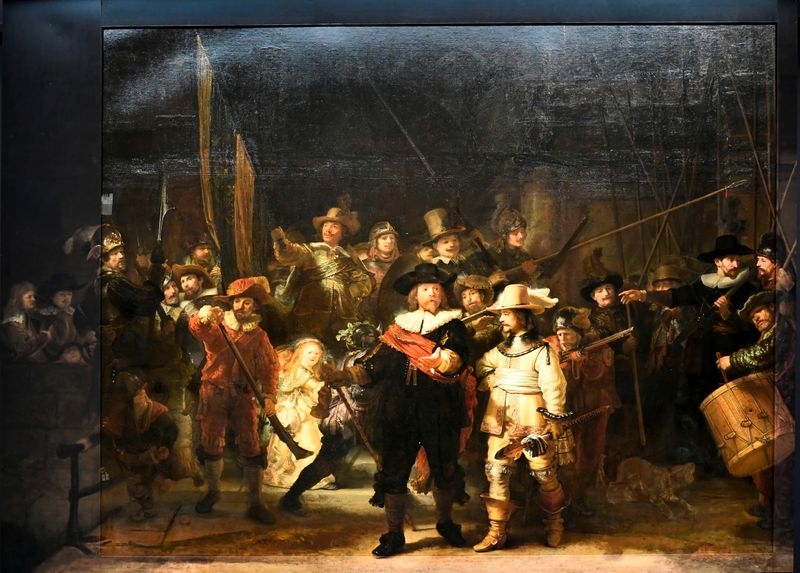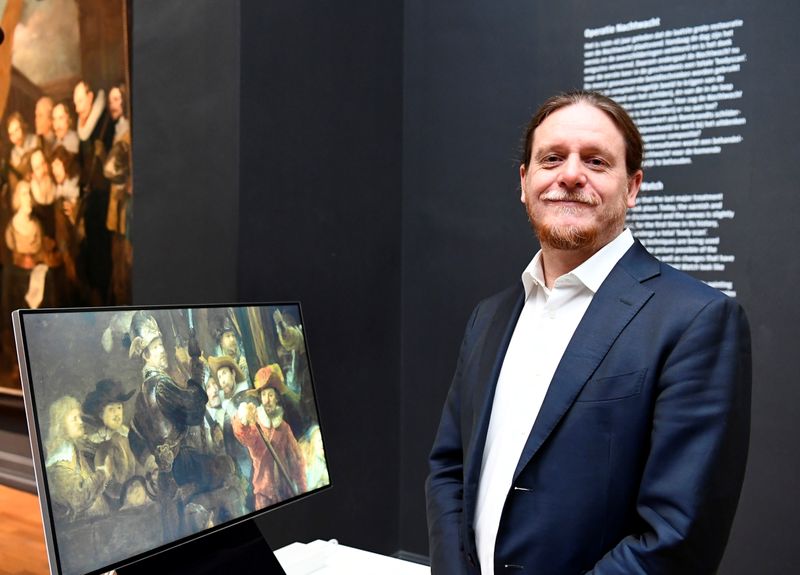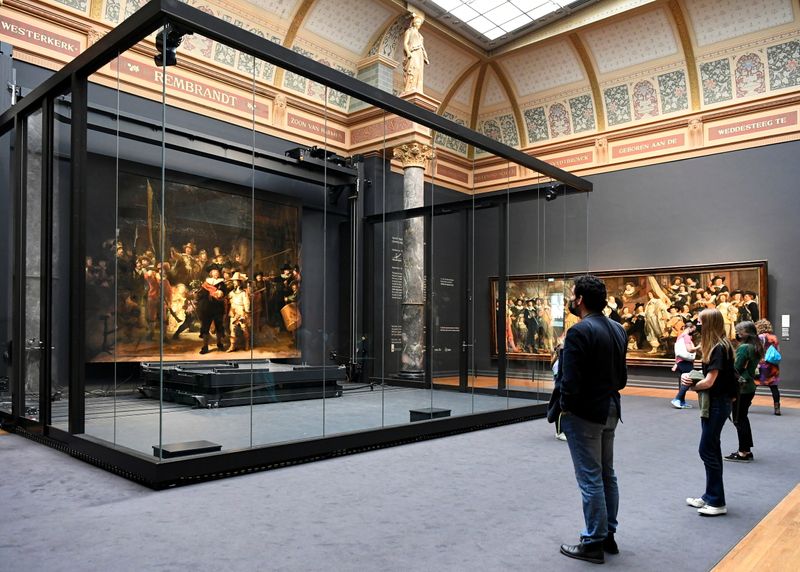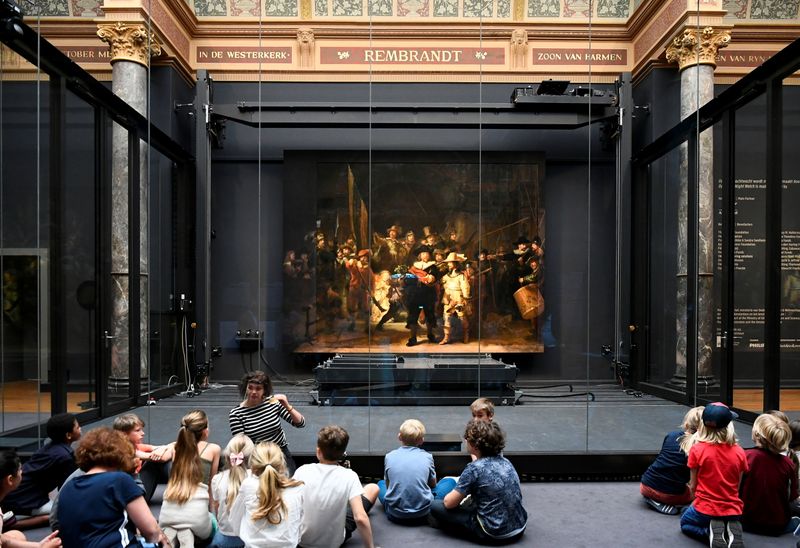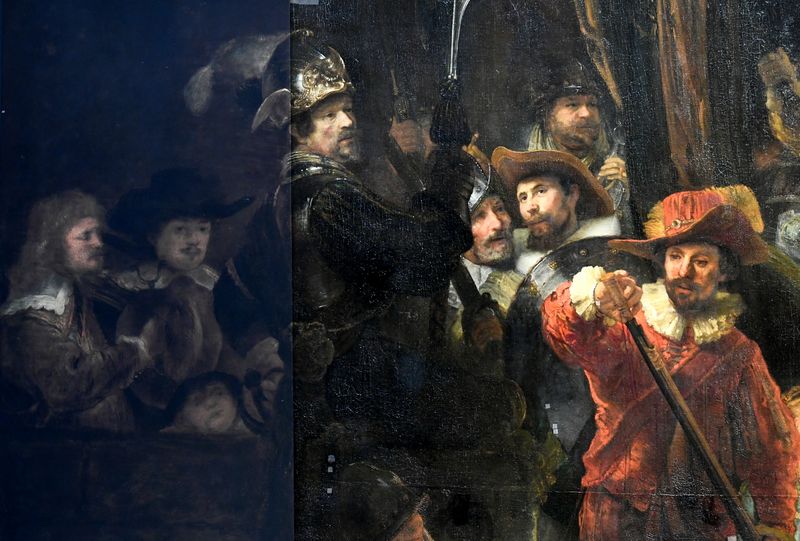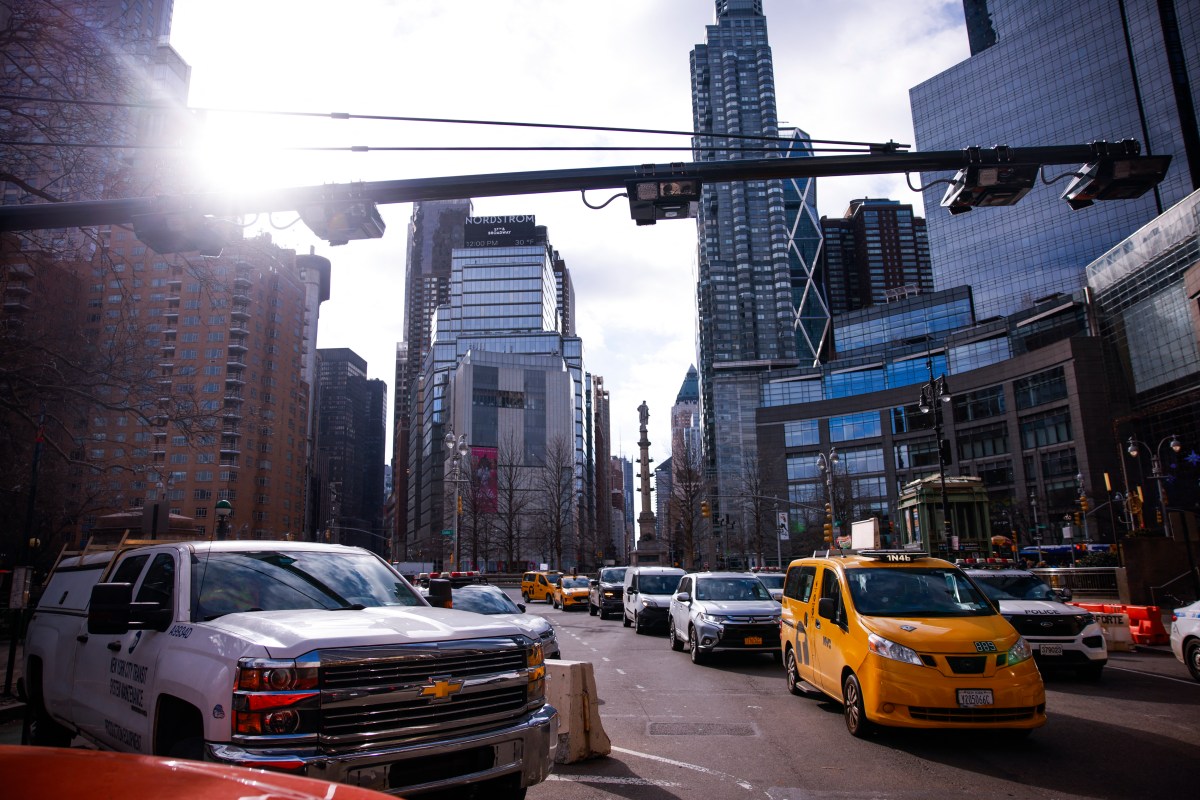AMSTERDAM (Reuters) – For the first time in 300 years, Rembrandt’s famed “The Night Watch” is back on display in what researchers say is its original size, with missing parts temporarily restored in an exhibition aided by artificial intelligence.
Rembrandt finished the large canvas, which portrays the captain of an Amsterdam city militia ordering his men into action, in 1642.
Although it is now considered one of the greatest masterpieces of the Dutch Golden Age, strips were cut from all four sides of it during a move in 1715.
Though those strips have not been found, another artist of the time had made a copy, and restorers and computer scientists have used that, blended with Rembrandt’s style, to recreate the missing parts.
“It’s never the real thing, but I think it gives you different insight into the composition,” Rijksmuseum director Taco Dibbits said.
The effect is a little like seeing a photo cropped as the photographer would have wanted.
The central figure in the painting, Captain Frans Bannink Cocq, now appears more off-centre, as he was in Rembrandt’s original version, making the work more dynamic.
Some of the figure of a drummer entering the frame on the far right has been restored, as he marches onto the scene, prompting a dog to bark.
Three restored figures that had been missing on the left, not highly detailed, are onlookers, not members of the militia. That was an effect Rembrandt intended, Dibbits said, to draw the viewer into the painting.
Rijksmuseum Senior Scientist Robert Erdmann explained some of the steps in crafting the missing parts, which are hung to overlap the original work without touching it.
First both “The Night Watch” and the much smaller copy, which is attributed to Gerrit Lundens and dated to around 1655, had to be carefully photographed.
Then researchers scaled the images to the same size, and warped the Lundens work to fit better with the Rembrandt where there were minor differences in placement of figures and objects.
The artificial intelligence software learned by trying millions of times to approximate Rembrandt’s style and colours more closely. Humans judged the success.
Erdemann said the result was good enough that the AI had “hallucinated” cracks in the paint in some spots as it translated Lundens work into Rembrandt.
But asked whether this is the best possible restoration of “The Night Watch”, he said no.
“I think technique will always be able to improve.”
(Reporting by Toby Sterling, Editing by Angus MacSwan)

